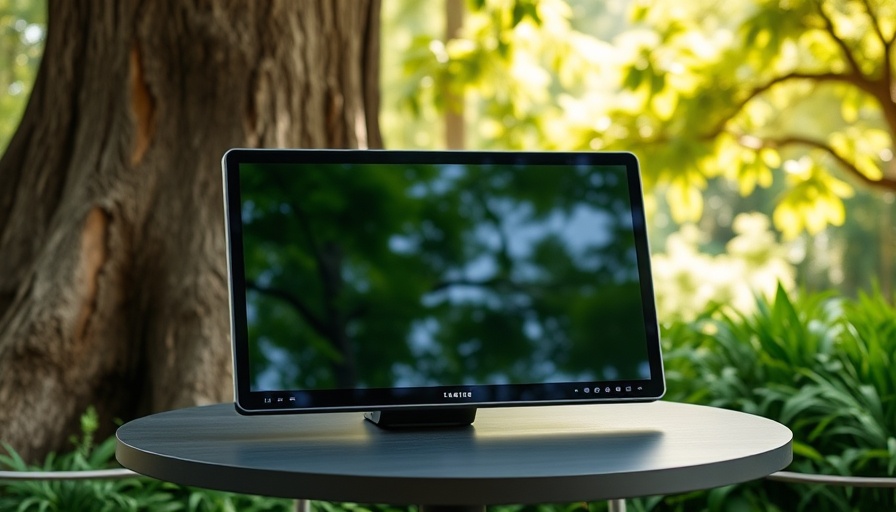
Why the Aura Triple Aero is Generating Buzz
In a world increasingly dominated by multitasking and digital productivity, the demand for innovative tech solutions has never been higher. Enter the Aura Triple Aero Pro Max, a gadget that's designed to supercharge your laptop experience by adding not one, not two, but three massive 15.6-inch monitors. However, while the concept seems brilliant, the execution leaves much to be desired, prompting a closer look at its potential impact on productivity enthusiasts and tech aficionados alike.
First Impressions: What Makes the Triple Aero Stand Out?
The initial allure of a portable triple-screen setup is undeniable, especially for individuals who work remotely or require additional screen real estate. The Aura Triple Aero, crafted from aluminum and sporting a sleek, modern design, aims to eliminate the strain of limited laptop displays. It features height-adjustable stands, promising an ergonomic work environment. Users can expect to fold and transport this tech wonder with relative ease, making it an appealing choice for those on the go.
Technical Specifications: A Closer Look at Display Quality
On paper, the Triple Aero's three 1080p IPS LCD screens seem to deliver the quality needed for daily tasks, but reality tells a different story. Users have reported that the display quality is subpar, particularly in bright environments. While the concept of having more screen space is attractive, the actual performance may not live up to expectations, especially given the high price tag.
Real World Usage: Portability Meets Practicality
While it’s great to have multiple screens, using the Triple Aero in public spaces like coffee shops might draw unwanted attention. The large setup can feel cumbersome, leading to self-consciousness among users. In contrast, many tech enthusiasts have found solace in simpler alternatives like the iPad Pro wireless display, which presents a more discreet option without sacrificing too much functionality. Ultimately, the decision to invest in the Triple Aero hinges on your specific work environment and needs.
Pros and Cons: Weighing the Benefits
-
Pros:
- Three displays for extensive multitasking.
- Compact design for easy transport.
- Passthrough charging for your devices.
- Minimal cabling required for setup.
-
Cons:
- Display quality leaves much to be desired.
- Software tends to be buggy.
- Built-in speakers are not usable.
- Can be awkward to use in public settings.
- Price is on the higher side for the quality offered.
Understanding the Target Market: Who Really Needs This?
This product seems tailored for tech enthusiasts who prioritize productivity in their digital workflow but are willing to compromise on quality for the sake of convenience. However, the portable monitor market is also filled with lower-cost alternatives that achieve similar functionality without the drawbacks of the Triple Aero. Solutions that offer similar screen space without the jarring design provide credible competition, making it essential for buyers to assess their own personal needs thoroughly.
Future Trends: What Lies Ahead for Portable Monitors
As technology evolves, users will continue to seek efficient solutions that cater to their multitasking needs. It will be interesting to see if brands like Aura can innovate further to address the current shortcomings of their products, such as display clarity and software reliability. Future iterations of portable monitors may witness significant advancements in display technology, making them not just useful, but a staple for the modern worker.
Final Thoughts: A Cautionary Tale
The Aura Triple Aero Pro Max is a textbook example of how ambition in tech design does not always equate to practicality. While its intentions to enhance productivity are commendable, the manifestation lacks the sophistication necessary to justify its existence in an already crowded market. If you're considering investing in a portable monitor solution, weigh your options carefully against the backdrop of your actual needs and environment. Sometimes less is more, especially when it comes to technology that’s meant to make our lives easier.
 Add Row
Add Row  Add
Add 




Write A Comment